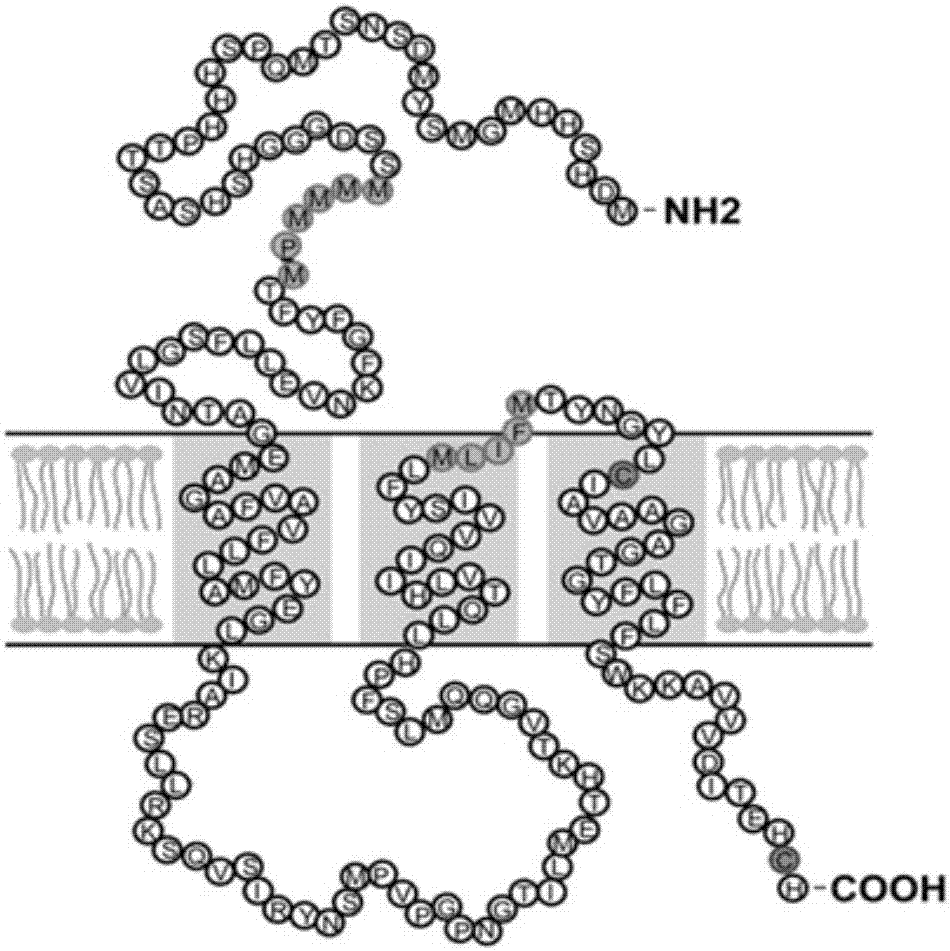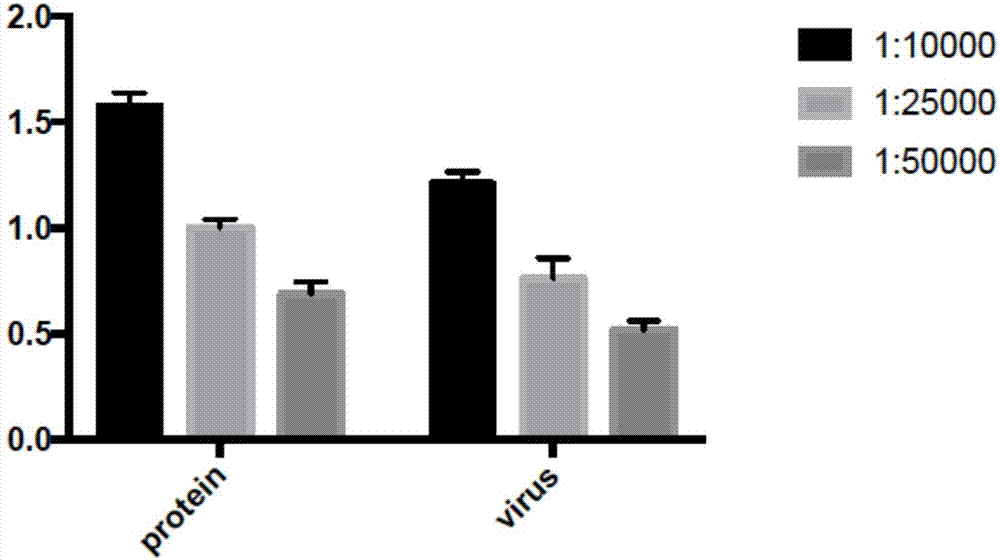Method for screening multi-transmembrane region protein antibody and application of multi-transmembrane region protein antibody
A screening method and technology of transmembrane region, which are applied in the field of multi-transmembrane region protein antibody screening, can solve the problem that the antigen cannot be directly coated, and achieve the effect of improving transportation and high concentration
- Summary
- Abstract
- Description
- Claims
- Application Information
AI Technical Summary
Problems solved by technology
Method used
Image
Examples
Embodiment 1
[0055] Example 1 Expression strategy of copper ion transporter CTR1 for antibody screening
[0056] The human copper ion transporter spans the cell membrane three times, belongs to multi-transmembrane protein, and consists of 270 amino acids. The N-terminus of the protein contains a divalent cation binding site, which can be used for purification by metal chelation affinity chromatography. In addition, we fused a stretch of (DYKDDDDKG) epitope recognized by anti-FLAG antibody at its C-terminus. The entire DNA was synthesized by the American Invitrogen Company and cloned into the American InvitrogenBac-to-Bac expression system. The preparation of recombinant baculovirus was carried out in strict accordance with the operating procedures set by Invitrogen. In the sequence listing, SEQ ID NO: 1 is the amino acid sequence of hCTR1, SEQ ID NO: 2 is the DNA sequence of hctr1, SEQ ID NO: 3 and SEQ ID NO: 4 are the amino acids added at the C-terminus of the human copper ion transporte...
Embodiment 2
[0057] Example 2 Expression and purification of hCTR1 protein
[0058] The expression and purification of hCTR1 protein were divided into the following steps.
[0059] 1. Expression of hCTR1 protein and separation of cell membrane components
[0060] The expression system Sf9 obtained in Example 1 was cultured in a shake flask containing SF 900 II medium (Invitrogen), and the cell density was 2.0 × 10 6 cells / ml culture medium, inoculate the third-generation baculovirus with a multiplicity of infection of 0.5. Continue to culture the cells at 27°C at 100 rpm. Harvest cells when their viability has dropped to between 70% and 80% (usually 70 to 72 hours after infection). Cells were washed once with PBS, suspended in 50 mM HEPES (pH 7.5) buffer, and disrupted with EmulsiFlex-C5 at a pressure of 10,000 psi. Cell lysates were first centrifuged at 1000g for 10 min at low temperature (4°C) to remove unlysed cells and nuclei. The supernatant was centrifuged at 100,000g for 1 h a...
Embodiment 3
[0063] Example 3 Antigen Preparation and Animal Immunization
[0064] Glycerol monooleate was melted at 40°C and added to a Haminton syringe, and the hCtr1 protein solution (5 mg / ml) and 1mg / ml phospholipid A to form a mixed solution (the volume ratio of protein solution and phospholipid A is 4:1; the volume ratio of glycerol monooleate to the mixed solution is 3:2), and the two syringes are connected with a special connector Then mix the contents of the two syringes until a clear lipid cubic phase (LCP) forms. Suspend the prepared lipid cubic phase in PBS so that each milliliter of phosphate buffer contains a protein concentration of 2 mg per milliliter, and then use a small high-pressure cell breaker to disperse the lipid cubic phase into microparticles with 20Kpsi twice.
[0065] Mix and emulsify the lipid cubic phase prepared above with an equal volume of Freund's complete adjuvant, and immunize rabbits. The dose of 600 μg protein per rabbit is used for the first immuniz...
PUM
 Login to View More
Login to View More Abstract
Description
Claims
Application Information
 Login to View More
Login to View More - R&D
- Intellectual Property
- Life Sciences
- Materials
- Tech Scout
- Unparalleled Data Quality
- Higher Quality Content
- 60% Fewer Hallucinations
Browse by: Latest US Patents, China's latest patents, Technical Efficacy Thesaurus, Application Domain, Technology Topic, Popular Technical Reports.
© 2025 PatSnap. All rights reserved.Legal|Privacy policy|Modern Slavery Act Transparency Statement|Sitemap|About US| Contact US: help@patsnap.com



